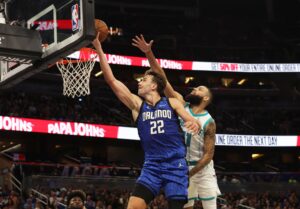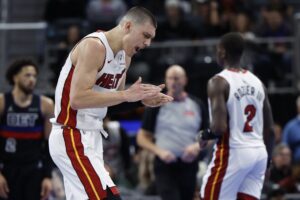JJ Redick, the Lakers’ new coach, sparked attention by declaring his intention to petition the NBA for a rule change regarding game balls. After the Lakers’ 110-103 win over the Timberwolves, Redick revealed his dissatisfaction with the use of brand-new basketballs during games.
“I’m not sure why we’re playing with brand-new basketballs,” Redick remarked, emphasizing the uncomfortable feel compared to worn-in ones.
His observation resonates deeply with players—hoopers desire a ball that’s been broken in, much like shoes that become more comfortable over time.
NBA Business: JJ Redick’s ‘Common-Sense’ Rule Change
Redick’s suggestion speaks to the instinct of hoopers everywhere. The need to feel comfortable with a ball before playing a serious game is a sentiment widely shared in basketball culture. However, this moment also marks the first time Redick, in his new role, is advocating for a rule change in the NBA. The question is whether his appeal will reach the NBA’s upper levels.
The Evolution of NBA Rules
Throughout its history, the NBA has implemented rule changes in response to various concerns raised by coaches, players, and analysts. From addressing the pace of the game to maintaining competitive balance, the league’s willingness to evolve has been a defining feature. For instance, coaches have been instrumental in pushing changes that improve game flow, such as the introduction of the 8-second backcourt violation, a reduction from the previous 10 seconds.
Similarly, the NBA adjusted defensive rules in 2001 to eliminate illegal defense guidelines and introduce zone defenses. These changes increased the speed of the game, reduced fouls, and ultimately provided a more exciting experience for fans. Redick’s request to allow worn-in basketballs continues in this tradition of coaches influencing game-day experiences, though it might seem minor compared to prior adjustments.
Why JJ Redick’s Rule Change Matters
Although a small tweak, Redick’s proposed change touches on a deeper issue within the NBA—how the game is prepared and presented. Modern rules, like those facilitating faster play and offensive flow, have made basketball more enjoyable. The implementation of a worn-in ball rule could similarly contribute to improved player performance, reducing the unfamiliar feel of a brand-new ball, which often lacks grip and comfort.
In a league where the smallest margins can make a difference, Redick’s idea holds weight. Even LeBron James backed Redick’s suggestion, further validating the request. For elite shooters, the ball’s feel can directly impact performance. By playing with worn-in balls, players may feel more confident in their shooting and overall ball control.
This small rule change, allowing worn-in basketballs, could positively impact statistics like turnover rates in the NBA. A worn-in ball offers better grip, control, and familiarity for players, reducing the likelihood of fumbled passes and mishandled dribbles. Over time, this could lead to a slight but noticeable decrease in turnovers across the league. Fewer turnovers would improve game flow and offensive efficiency, allowing players to maximize their skills while maintaining a cleaner, more polished style of play.
NBA’s Adaptability and Focus on Quality
The NBA has always been proactive in enhancing the quality of its games. Rule changes aimed at speeding up the game, like the 14-second shot clock reset after an offensive rebound, have helped maintain pace while aiding offenses. Defensive rule changes, such as refining hand-checking and adjusting blocking calls, allowed for a balance between offense and defense. This constant fine-tuning ensures that the final product remains engaging for fans while promoting fair competition.
Redick’s request reflects the same goal: ensuring that players perform at their best with a ball that feels right in their hands. The league’s response will indicate how much they prioritize such subtle but crucial aspects of gameplay.
The Last Word
Redick’s call for worn-in basketballs may seem minor, but it taps into a long-standing desire from players for consistency and comfort on the court. As the NBA continues evolving its rules to produce the best product, this proposed rule change aligns with the league’s history of addressing player concerns. Whether the NBA heeds Redick’s call or brushes it aside, one thing is clear: Redick has no intention of staying quiet on matters he feels are vital to the game. The league’s response will be highly anticipated, especially among players looking for an edge.






